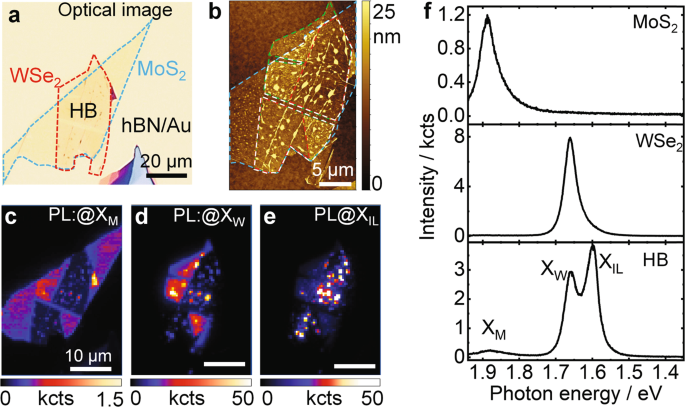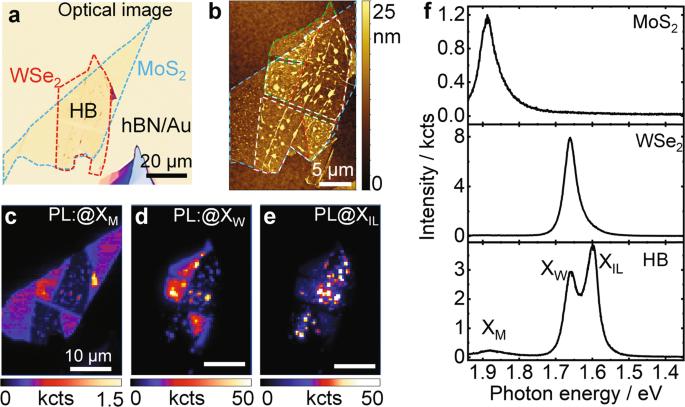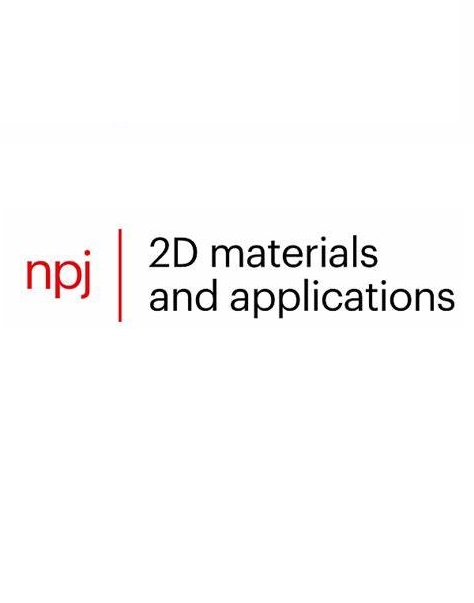在超窄带间隙-等离子体机制中定制 TMDC 异质层中的激子动力学
IF 9.1
2区 材料科学
Q1 MATERIALS SCIENCE, MULTIDISCIPLINARY
引用次数: 0
摘要
控制过渡金属二掺杂化合物(TMDCs)及其异质结构中的激子对于调整光物质相互作用以及探索其在高效光电和非线性光子器件中的潜在应用具有重要意义。虽然对 TMDC 中的层内和层间激子进行了大量研究,但它们在量子隧道机制中的行为(TMDC 或其异质结构在光激发的同时充当隧道结势垒)仍未得到探索。在这里,我们利用原子力显微镜中金属探针的自由度,通过在微调的亚纳米尖端样品腔中局部控制结电流,研究了 TMDC 异质层的层内和层间激子动力学。我们的尖端增强光致发光测量结果表明,层内和层间激子的激子量子等离子体耦合明显不同,这是由于各自 e-h 对偶极子的取向不同造成的。利用稳态速率方程拟合,我们提取了有结电流和无结电流情况下量子隧道机制中激子的场梯度、辐射和非辐射弛豫速率。我们的研究结果表明,由于珀塞尔效应,尖端诱导的层内(层间)激子辐射(非辐射)弛豫在量子隧道机制中占据主导地位。这些发现对于在强耦合机制下对激子材料进行近场探测具有重要意义。本文章由计算机程序翻译,如有差异,请以英文原文为准。


Tailoring exciton dynamics in TMDC heterobilayers in the ultranarrow gap-plasmon regime
Control of excitons in transition metal dichalcogenides (TMDCs) and their heterostructures is fundamentally interesting for tailoring light-matter interactions and exploring their potential applications in high-efficiency optoelectronic and nonlinear photonic devices. While both intra- and interlayer excitons in TMDCs have been heavily studied, their behavior in the quantum tunneling regime, in which the TMDC or its heterostructure is optically excited and concurrently serves as a tunnel junction barrier, remains unexplored. Here, using the degree of freedom of a metallic probe in an atomic force microscope, we investigated both intralayer and interlayer excitons dynamics in TMDC heterobilayers via locally controlled junction current in a finely tuned sub-nanometer tip-sample cavity. Our tip-enhanced photoluminescence measurements reveal a significantly different exciton-quantum plasmon coupling for intralayer and interlayer excitons due to different orientation of the dipoles of the respective e-h pairs. Using a steady-state rate equation fit, we extracted field gradients, radiative and nonradiative relaxation rates for excitons in the quantum tunneling regime with and without junction current. Our results show that tip-induced radiative (nonradiative) relaxation of intralayer (interlayer) excitons becomes dominant in the quantum tunneling regime due to the Purcell effect. These findings have important implications for near-field probing of excitonic materials in the strong-coupling regime.
求助全文
通过发布文献求助,成功后即可免费获取论文全文。
去求助
来源期刊

npj 2D Materials and Applications
Engineering-Mechanics of Materials
CiteScore
14.50
自引率
2.10%
发文量
80
审稿时长
15 weeks
期刊介绍:
npj 2D Materials and Applications publishes papers on the fundamental behavior, synthesis, properties and applications of existing and emerging 2D materials. By selecting papers with the potential for impact, the journal aims to facilitate the transfer of the research of 2D materials into wide-ranging applications.
 求助内容:
求助内容: 应助结果提醒方式:
应助结果提醒方式:


